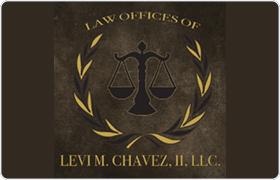Sandoval County, NM Criminal Lawyers
Sponsored Law Firm
-
 x
x

Click For More Info:
-
Law Offices of Levi M. Chavez, II, LLC
P.O. Box 7595 Albuquerque, NM 87194» view mapCriminal Defense Law Waging War Against Prosecution
As a client, your case will be examined through the lens of Levi’s training in police procedures and criminal investigations.
800-663-0170
Boglarka Foghi
✓ VERIFIEDDivorce & Family Law, Criminal, Business
The Foghi Law Firm was founded by Boglarka Foghi in 2009, specializing in criminal defense, family law, and business law. Managing Partner Boglarka F... (more)
Petra Benavides Schwartz
Children's Rights, Criminal, International Other, Employee Rights
Status: In Good Standing
 Levi M. Chavez, II Albuquerque, NM
Levi M. Chavez, II Albuquerque, NM Practice AreasExpertise
Practice AreasExpertise

